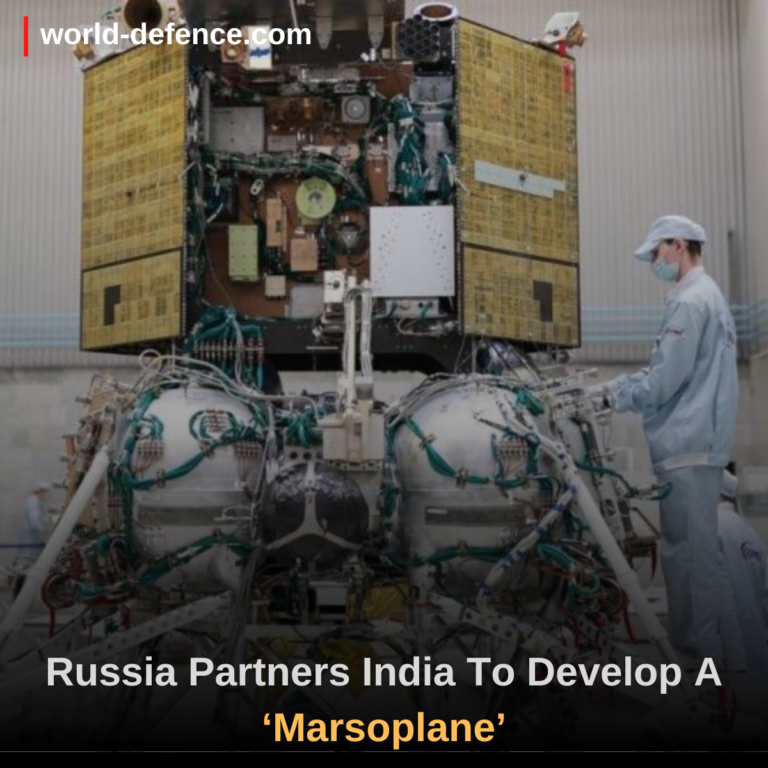
Russian and Indian scientists are developing a Marsoplane to investigate the Red Planet, with hopes to test a technology demonstrator by the end of 2024.
Advertisement
Yelena Karpovich, a junior MAI researcher in charge of the project’s UAV general and aerodynamic designing, gave the details about the project to TASS on February 28.
Karpovich said that a group of researchers from the Moscow Aviation Institute (MAI) is working with experts from India to build a fixed-wing robotic aerial platform to investigate the Martian atmosphere and surface.
She stated that the technology demonstrator will be tested by the end of 2024. Karpovich explained that international scientists are designing and developing the Mars robotic flying craft.
Computational fluid dynamics experts from the Indian Institute of Technology, Kharagpur, are part of this team. According to Karpovich, the initiative aims to develop the concept of a fixed-wing aerial vehicle that might find a niche alongside the current Mars research probes.
Advertisement
/cdn.vox-cdn.com/uploads/chorus_image/image/59728383/marshelo.0.jpg)
The development of the Marsoplane started in April 2022 after receiving funds from the Russian Science Fund. In addition to developing a technology demonstrator, the Russian side will publish ten articles by the end of 2024.
The announcement comes as the US and India step up their space collaboration. Both nations recently agreed to increase their cooperation in civil space, including training Indian astronauts and launching payloads on private lunar landers.
The US said it would set up the training of an Indian astronaut at NASA’s Johnson Space Center in a statement released by the White House on January 31. However, the White House did not specify the time or details of the “advanced training” that will be provided.
READ MORE
India has depended on Russia to train its astronauts, and in 2020 it sent some Indian Air Force pilots to the Star City Cosmonaut Training Center.
This training was a component of India’s Gaganyaan human spaceflight program, which also entails the development of a manned spacecraft by the Indian space agency ISRO that would launch on a modified version of its GSLV Mark 3 rocket.
Also, the agreement aimed to increase commercial space activities between companies. The USA’s Commerce Department and India’s Department of Space have also launched a new project. The White House said it would promote US-India commercial space involvement and facilitate collaborations and growth between the two countries’ commercial space industries.
Advertisement
Challenges Ahead
The announcement of the development of a Marsoplane by Russian and Indian scientists implies that India and Russia have been working together to explore Mars’ atmosphere and surface.
Nonetheless, there will still be a few challenges that the team must overcome. She noted that the project’s main challenges are related to the peculiarities of the Martian environment and atmosphere, and the UAV must be equipped to handle the Red Planet’s rarified atmosphere and dust storms.
The Martian atmosphere’s peculiarities make it challenging to design effective lifting surfaces and limit options for power sources. The flight profile of the flying craft with a minimal wing load must be carefully designed to protect the systems and equipment during dust storms.
The researcher also said figuring out how to place the UAV into the carrier rocket’s nose cone was crucial. Karpovich noted that the UAV must be highly compact or have a folding or soft structure design (an inflatable or self-hardening wing).

She emphasized that the research mission of the project is being conducted in collaboration with the Space Research Institute of the Russian Academy of Sciences.
The team is currently discussing research tasks for UAVs and their relevant equipment and flying profiles, as well as study-relevant areas on Mars, with experts from the Space Research Institute.
She said the scientific mission might include exploring the Martian magnetic field and meteorological, mineralogical, and thermophysical studies.
Karpovich explained that the Lavochkin Research and Production Association also advises the team on the requirements of equipment and powerplants that can be utilized in space. She stressed that this puts their work on an entirely new scientific and engineering level.
Advertisement
ALSO READ